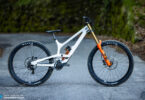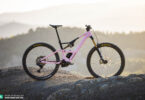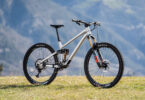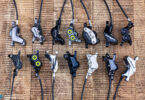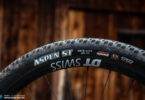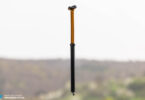New Generation – Ibis reveals the Mojo HD4
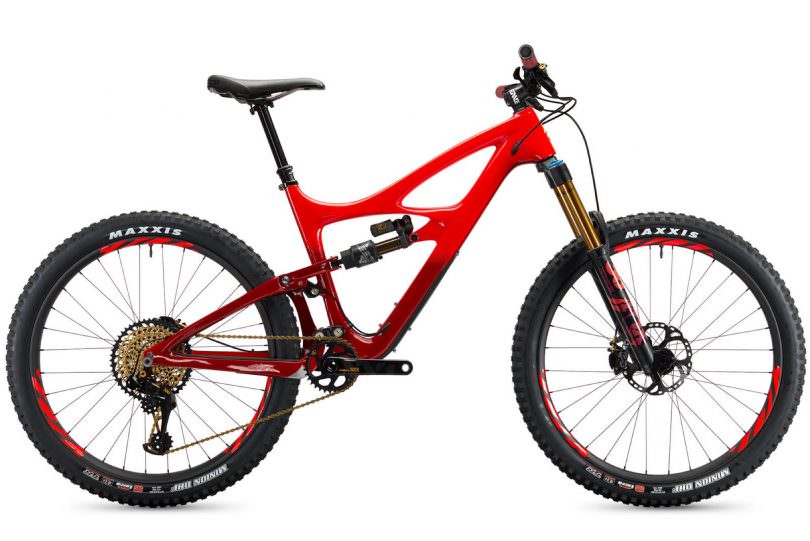
Last weekend we spotted the new Ibis Mojo HD4 at the EWS in Wicklow, Ireland. Now Ibis has officially introduced the next generation of their legendary HD enduro bike, that will be available very soon. All specs and details directly from Ibis:
The HD4 is the latest in the iconic HD series from Ibis, featuring 27.5″ wheels and 150mm of rear wheel travel, delivered through the efficient DW-link suspension. Building on the success of the HD3 and its predecessors, the HD4 has been muscled up and stretched out to handle the steepest most aggressive terrain found worldwide. Testing over the past year was conducted throughout Northern California’s most rugged backcountry trails and also by members of our Enduro World Series (EWS) team.
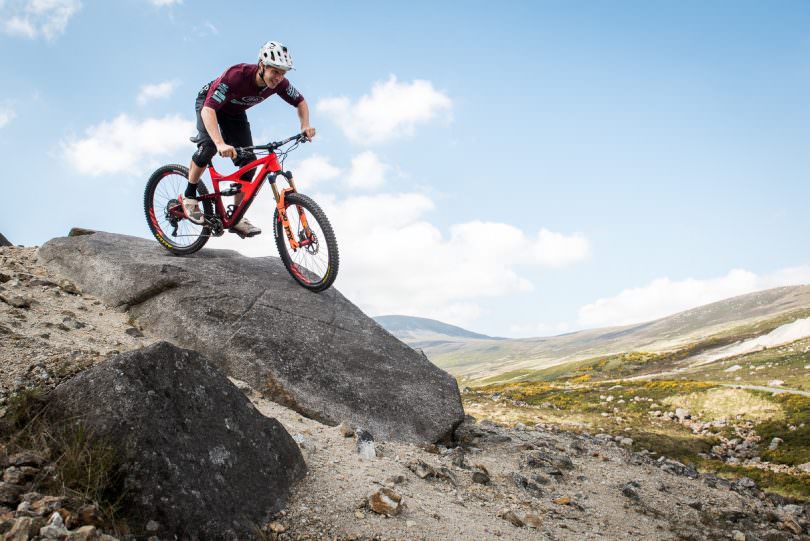
What’s new in the HD4?
- Refined progressive geometry
- 64.9 degree head tube angle
- Reach increases across the size range (4mm on small, to 34mm on XL)
- Seat tube length reduction and bore depth increase, allowing for the longest droppers
- 30% stiffer upper link, 40% stiffer lower link
- Increased progression in shock leverage curve for better big hit performance
- Re-engineered carbon layup yielding greater frame stiffness overall
- dw-link v5 kinematics, Dave’s most efficient system to date
- Available in Fireball Red, or Añejo Silver & Lime
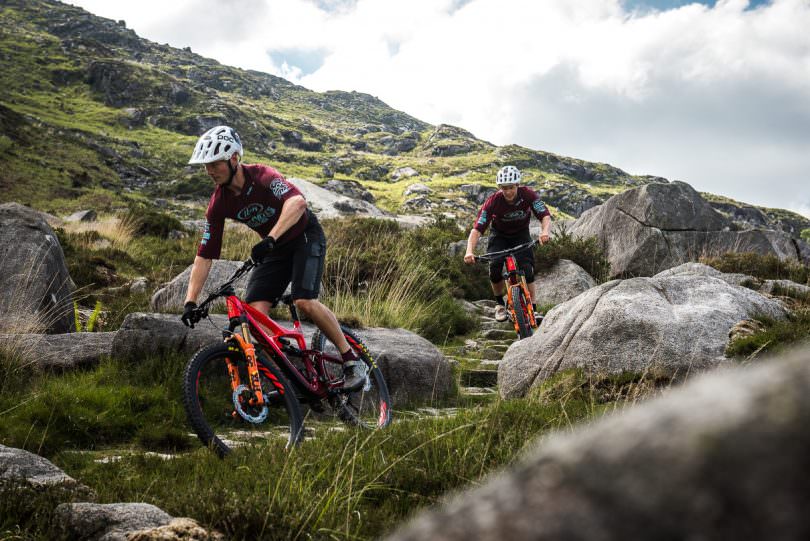
Frame Set I
Shock: Fox Float X2
Price: $ 3,269
Frame Set II
Shock: Fox Float
Price: $ 2,269
HD4 Complete Bike
- XX1 Eagle: $9,399
- X01 Eagle: $7,099
- XT: $6,199
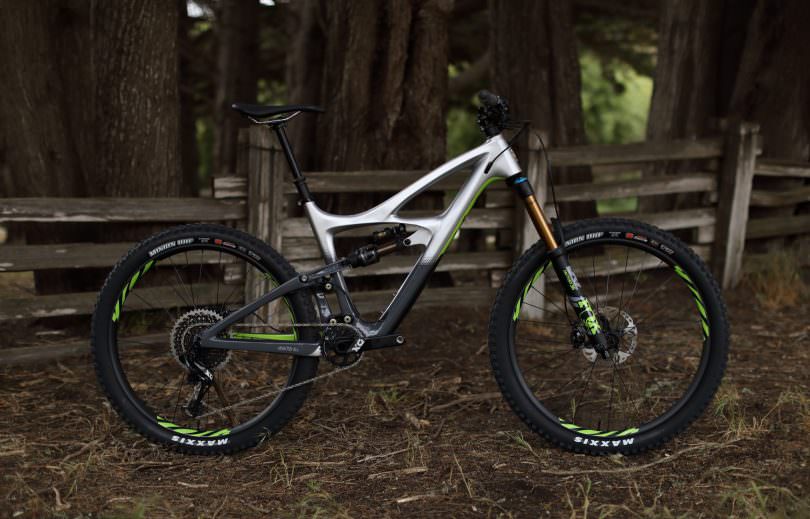
Progressive Geometry
One of the design goals of the HD4 was to enhance the bike’s handling capabilities over rough and steep terrain. The Mojo HD and Mojo 3 have had a lot of overlap and geometry similarities, with the new HD4 we are interested in separating the two bikes and growing the HD4’s capabilities. We have been riding geometry testing mules for almost a year now, sampling different angles and lengths to determine the right feel for this bike. We’ve test ridden extensively in Santa Cruz, Downieville, Northstar, and in the high Sierras to get a feel for different terrains and traction conditions and the particular needs of each.
In dialing in the geometry, we gave ourselves free reign to figure out what would work best. Instead of choosing a geometry by committee or based on other companies’ bikes, we chose our geometry based on what worked best when we rode the steepest and gnarliest trails we could find. In our testing, we were able to see what each geometry dimension actually did to help the rider. For example, by trying a number of head angles back to back to back, with all other geometry dimensions held constant, we were able to pinpoint some desirable characteristics. The obvious one is that with proper trail measurement, the bike’s ability to steamroll through rough terrain is greatly enhanced. Less intuitive, but borne out by testing is that reducing the head angle will allow the bike to achieve higher lean angles before slipping out. This change also makes the bike more stable as the trail transitions to off-camber, meaning it’s less likely to slip out or get pushed down by the trail. On the Mojo HD4 we set the head angle at 64.9 degrees to maximize the stability in off-camber sections, increase our maximum lean angle and allow us to carry great speed through the chunder.
Reach
We have seen many consumers buying bikes that were a size larger than we anticipated, indicating that we wanted to grow the reach of the Mojo HD4 by at least that much. We rode bikes with different reach numbers and were able to find a nice balance between being long enough without going too long. Compared to the Mojo HD3, size by size we increased reach by one whole frame size then added a little more. This longer reach combined with the slacker head angle greatly increases the wheelbase and gives a very stable ride for the roughest terrain.
Droppers
Like most people who ride aggressively on their trail bikes, we have really enjoyed riding with longer and longer dropper seatposts, especially as the terrain gets rougher and steeper. We recognized that having the seat completely out of the way made all the difference when things got really hairy. So we set out to give compatibility with the longest dropper posts available today, with enough room for adjustment to fit everyone. Compared to the HD3 we lowered the tops of the seat tubes roughly one size, so that a Large frame now measures 17.5″ center to top. We also ensured the internal bore of the seat tube was deep enough. This allows riders to use the longest seatpost possible and still get their correct saddle height. On the Medium, Large, and X-Large sizes, almost everyone should be able to use 170mm dropper seaposts, while 150mm dropper seatposts should work for almost all Small size owners.
DW-Link
From the suspension standpoint, we absolutely love how the current Mojo HD3 pedals. We didn’t want to mess with such a dialed suspension design so we left the kinematics the same for the Mojo HD4. What we did do, is engineer more progression into the shock leverage curve, allowing for more big-hit capability in very rough terrain. The travel went up a tiny bit, and it now has 153mm of rear travel. The bike is intended to fit a piggy-back rear air shock while still fitting a 22 oz water bottle in the frame. Coil shocks are not recommended, due to the clevis shock yoke extending the eye-to-eye too far to give a good bushing overlap ratio.
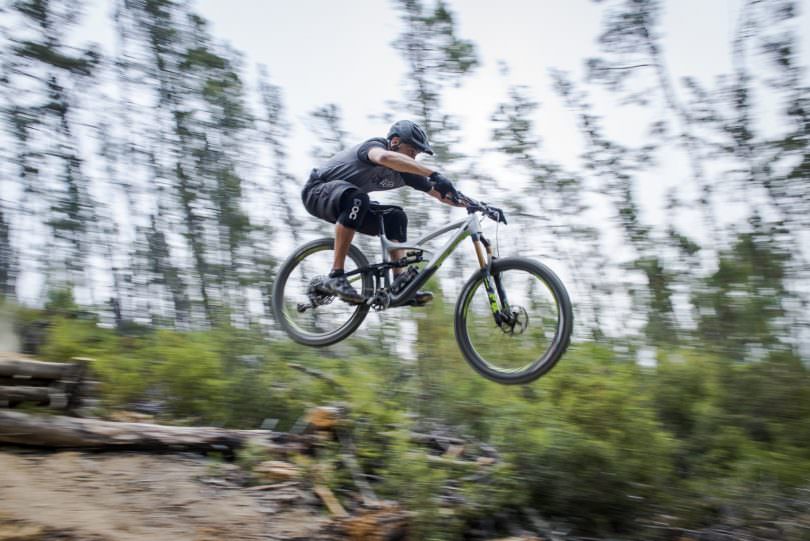
Travel
We think 6” of travel is right for most people’s riding needs, we felt it struck the best balance for a climbable enduro style bike. With a longer travel bike comes the temptation to put 180mm forks on them, thus requiring heavier frame construction and moving the bike into a different category.
Variable leverage rates and shock tunes can make a 6” bike feel it’s got much more travel, or it can be the other way around. Since our dw-link bikes tend not to get stuck in the middle of their travel and have a very linear feel to them, the available travel feels consistent, predictable and more usable.
Another advantage of sitting a bit higher in its travel is that we can lower the bottom bracket height, making for a better handling bike, while not being prone to pedal strikes.
Linkages
With continued refinement, we’ve managed to eek 30% more stiffness out of the upper link as compared to the last iteration of the HD. This upper link is backward compatible to the HD3. The HD4’s lower link’s stiffness is increased by 40% compared to the links on the Mojo HD3 and is unique to the HD4.
Molding Technology
We start by molding a sacrificial mandrel in exactly the shape that we want the inside of the frame to be. That becomes the 3D template for the bladder that holds all the carbon preform before it’s laid into the mold. This allows the lay-up to be done in one piece, with no joints anywhere. The result is a more precise structure that eliminates the need for additional foam or filler to mold the complex shapes. What that means for you is a lighter and stronger frame, critical factors in hitting our targets for weight and stiffness.
The Geometry of the Ibis Mojo HD4
| Size | S | M | L | XL | |
|---|---|---|---|---|---|
| Seat Tube | 362 mm | 393 mm | 445 mm | 483 mm | |
| Top Tube | 579 mmm | 604 mm | 628 mm | 658 mm | |
| Head Tube | 87 mm | 109 mm | 126 mm | 158 mm | |
| Head Tube Angle | 64.9° | 64.9° | 64.9° | 64.9° | |
| Seat Tube Angle | 74° | 74° | 74° | 74° | |
| Chainstay | 430 mm | 430 mm | 430 mm | 430 mm | |
| Bottom Bracket Drop | 12 mm | 12 mm | 12 mm | 12 mm | |
| Wheelbase | 1163 mm | 1192 mm | 1219 mm | 1251 mm | |
| Reach | 415 mm | 435 mm | 455 mm | 480 mm | |
| Stack | 570 mm | 590 mm | 605 mm | 620 mm |
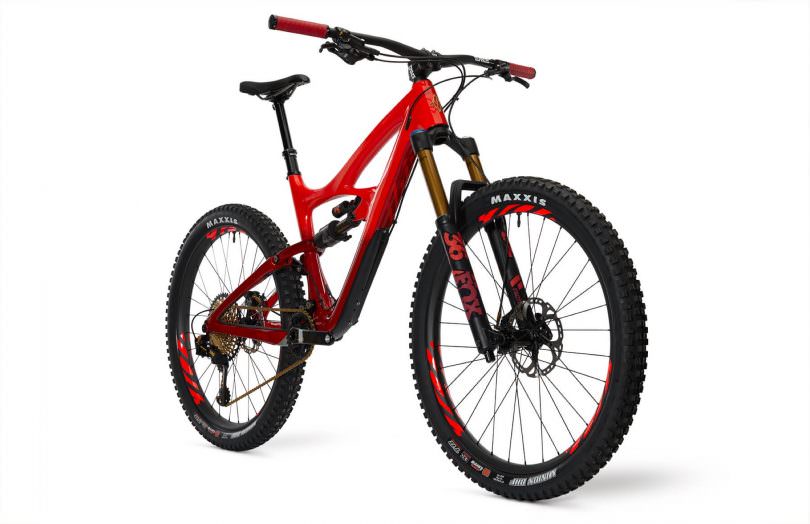
The HD4 will begin shipping worldwide June 15th.
For more Information head to: biscycles.com
Did you enjoy this article? If so, we would be stoked if you decide to support us with a monthly contribution. By becoming a supporter of ENDURO, you will help secure a sustainable future for high-quality mountain bike journalism. Click here to learn more.
Words & Photos: PN Ibis Cycles


